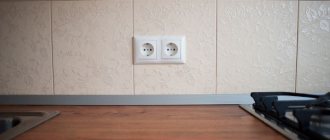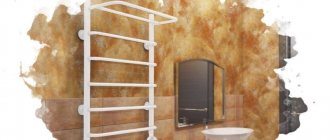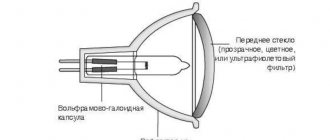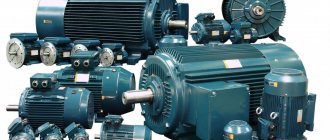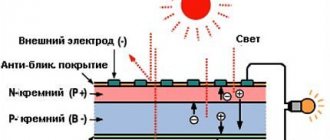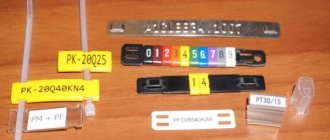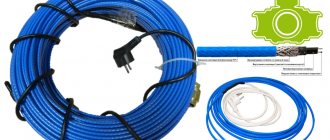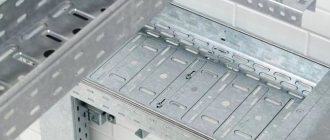There are many reasons why it is advisable to hide electrical wires in a corrugated sleeve:
If there is a need to install cables in walls made of flammable materials or under finishes prone to fire, it is necessary to take corrugated cables with a non-combustible sheath.
When electrical wiring is covered with finishing material, there is a risk of subsequently damaging the cable, for example when drilling holes. Hard shell corrugation reduces the likelihood of damage.
If the cable is installed under the floor or in a screed, protection is provided from compression or damage while maintaining the ability to be quickly replaced.
For external wiring, an outdoor cable corrugation is used. It should have increased protection from damage and exposure to weather factors.
If the gasket is open, then you should pay attention to heat resistance and immunity to sunlight. Aerial installation involves the use of a reinforced product. When carrying out work at the underground installation site, waterproof rigid corrugation is used.
Types and types of corrugated pipes
Cable corrugation is distinguished according to the following parameters:
- Diameter.
- Wall thickness.
- Materials used.
- Blossom.
- Resistant to loads.
The flexibility of the corrugation and its stability depend on the thickness of the walls and the material from which it is made. The conditions under which it can be used depend on the materials used.
Classification by material and its main characteristics:
- PVC is the most common option. Non-flammable and relatively cheap corrugation for wiring. When exposed to UV radiation, it is destroyed, which imposes restrictions on outdoor use.
- Polyethylene and polypropylene (PPR). There are corrugated pipes made of low-pressure polyethylene (LDPE) and high-pressure polyethylene (LDPE). Operated in a temperature range from -40 to +45 degrees Celsius. Resistant to UV rays, acids, oils and solvents. They are distinguished by color: black and two-layer red - polyethylene, and blue - polypropylene.
- Metal corrugation. It is also called a metal hose. They provide good cable protection from mechanical damage. Resistant to active substances and oils.
Interesting! The marking of metal hoses is deciphered as follows: RZ-Ts, RZ-TsKh, RZ-TsA - made of galvanized steel; RZ-SL and RZ-SL-X - made of tinned steel tape; RZ-CP – with PVC insulation, for sealing.
Based on the number of layers, they are distinguished:
- Single layer. PVC sleeves most often consist of just one layer, and its thickness can be different.
- Double layer. An example is a double-wall HDPE pipe.
Load resistance:
- Lightweight (up to 320 N/5 cm2) – the walls are thin and flexible. They are installed on suspended ceilings and in plasterboard structures.
- Medium (up to 750 N / 5 cm2) - placed in a groove.
- Heavy (withstand up to 1250 N/5 cm2) - the toughest, laid in concrete screeds.
- Extra heavy reinforced (up to 4000 N/5 cm2 and above). They are laid underground or suspended on supports for outdoor installation.
Another factor is the types of corrugation in color. This is not fixed by regulation, but usually gray and white corrugations are made of PVC, red, black and blue are made of polyethylene. There are also colored models, it depends on what dye is added to the mass during production. You can use specific colors for each line type:
- White – lighting and internet.
- Gray or black – sockets, general purpose circuits.
- Green – information cables and telephony.
- Red – for external use.
In practice, such a division does not occur often.
The thickness of the corrugated wall is in the range of 5-15 mm. The outer diameter for PVC corrugation is in the range of 16-50 mm. Below is a detailed table showing the size range of cable corrugations.
| Outside diameter | Inner diameter |
| 16 | 10.7 |
| 20 | 14.1 |
| 25 | 18.3 |
| 32 | 24.5 |
| 40 | 31.5 |
| 50 | 39.6 |
Size range of metal hoses:
| Outside diameter | Inner diameter |
| 9.8 | 5.1 |
| 11.0 | 7.7 |
| 13.5 | 9.7 |
| 15.6 | 11.7 |
| 19.0 | 14.7 |
| 22.0 | 18.0 |
| 38.0 | 31.5 |
| 45.0 | 37.5 |
| 58.0 | 49.5 |
| 71.5 | 62.5 |
| 87.5 | 78.0 |
There are also options with and without a probe. The probe is often called a wire puller. This is a thin steel wire to which wires are tied and with its help the wiring is pulled into the sleeve. This is especially convenient when using conductors with flexible stranded cores.
What is a muffler corrugation and why is it needed in the exhaust system?
Our experts also recommend installing them on cars in which the installation of corrugation is not provided for by the standard design, for example, cars of the VAZ family and some foreign car models. By doing this, you significantly extend the “life” of the exhaust system, get rid of vibrations transmitted through the exhaust tract from the engine, and save yourself from the risk of damaging or tearing off the exhaust system in the event of a collision with an obstacle. It is highly desirable to install corrugations on tuned cars with forced engines, i.e. To. Due to the high power and increased engine stroke on the cushions, the exhaust system is subjected to much greater loads, which leads to faster failure. Clients often contact our company with a request to manufacture an exhaust tract for power plants using engines running on various types of fuel (gasoline, diesel, gas), which are installed in private houses, cottages, dachas and special vehicles in the kung. In this case, we always recommend installing a corrugation in order to eliminate the transmission of vibration from the generator to the walls of the house or the body of the car.
The high-quality corrugations themselves are quite reliable and the main reasons for their failure are mechanical damage, a consequence of a clogged catalyst if it is installed after the corrugation, faulty engine mounts, especially on diesel engines where there is increased engine vibration.
Composition and dimensions of corrugated pipe.
The corrugated pipe consists of two layers of polymer material - outer and inner. The outer layer is corrugated low-density polyethylene . The inner layer is high-density polyethylene, which is specially made smooth. A smooth surface from the inside is needed so that the corrugation does not fray and can last longer.
The diameter of the corrugation can be varied. It all depends on what cable or wires you use. Basically, cable corrugations are sold in diameters from 16 to 63 millimeters. As for the length of the corrugation, everything depends on its diameter. The larger the diameter, the shorter the length of the corrugation in one skein. Most often, corrugation is sold in lengths of 25 meters or more.
Advantages of plastic corrugation and features of its use
Plastic corrugated pipes have many advantages and disadvantages:
— Ease of installation, which, in turn, allows you to lay the cable as quickly as possible. The steel probe, which is located inside the pipe, significantly speeds up and facilitates cable pulling.
— Corrugated pipe is very flexible, which allows it to be laid in hard-to-reach places and not to use connectors and turns during installation.
— Corrugated pipes are very cheap compared to other cable pulling methods. But you can save even more if you use pipes without an internal probe. But it is worth noting that this will complicate the work a little and extend the laying time.
— Such pipes do not conduct electricity; they are good insulators.
— The pipes are heat-resistant, that is, if a fire occurs inside the pipe, the fire will not be able to penetrate further.
To install corrugated pipes, special clips are used, which are divided into several types:
- regular clips
- snap clips
- clips with clamp
- clips with latch and dowel
When laying wiring in the ground, there are certain features in the choice of corrugated pipes. In this case, it would be advisable to use special HDPE corrugation, which differs from other types of pipes in its high strength and the possibility of their use in concrete, in air, and in soil. HDPE corrugated material is very resistant to moisture and ultraviolet radiation. The temperature range of such a pipe is quite wide, from -40 to +90 degrees. Corrugated plastic pipes can be used at temperatures from -5 to +60 degrees.
Cable design SIP-4 4x16
Inside the product there is a cable core that acts as a conductor. It is made from aluminum alloy in accordance with GOST No52373-2004. The cable cores can be sectored or round and consist of a certain number of wires that are twisted into a tight bundle.
Power line installations
The internal cores are also made of aluminum, sometimes copper is used in the composition. External insulation is made of PVC materials. This shell may be flammable or non-flammable. The first option is used more often, which provides additional safety for the operation of power lines.
Which corrugation to choose
To figure out which corrugated pipe to buy: HDPE or PVC, let’s look at typical applications for different types of corrugation.
PVC is suitable for:
- Laying external wiring in a wooden house.
- For connecting electrical wiring of lamps in suspended ceilings and behind plastic and gypsum board panels.
- Electrical installation in the bathhouse, bathroom and other places with high humidity.
- It is the most common and is most often used when installing in an apartment or house.
- For outdoor use, but provided that direct sunlight is minimized.
Application
Before the advent of corrugated electrical pipes as a material for hidden wiring, cables were buried in walls, covered with plaster, and the open edges were screwed to a support or passed through a metal pipe. This significantly complicated the dismantling and repair of the electrical network in the event of problems such as a short circuit - to remove the cable it was necessary to break the seam.
The corrugation for cables is also hidden in grooves (a gap in the wall for wiring) and covered with mortar, but the wire itself remains free, and if necessary, it can be easily removed by pulling the free edge. In addition, automotive corrugation is flexible, lightweight, environmentally friendly and affordable. Two characteristic advantages of this material deserve special attention:
- Fire safety. Corrugations made of self-extinguishing PVC (flammability degree B3 according to GOST 30402-96) not only do not burn themselves, but also prevent the spread of fire when the wiring catches fire, shrinking around the cable and limiting the flow of oxygen.
- The corrugation provides additional moisture insulation for electrical wiring, which is important for rooms with high humidity.
It appeared on the construction products market relatively recently, but, thanks to its beneficial properties, it almost immediately became very popular.
Corrugated pipes (corrugations) for electrical wiring.
What to look for when purchasing
First of all, having already decided on the material of the corrugated pipe, you need to carefully study the letter markings and color.
So, for a metal hose, the presence of the letter “X” in the name means the presence of a cotton seal, “A” – asbestos-cement, “P” – additional polyvinyl chloride insulation.
In addition, steel hoses may have flanges and ends for welding at the ends, which is useful during installation.
The color of the corrugation will tell you about the purpose of the pipe, since the standard approves the matching colors of cables and pipes suitable for them.
| Color | Purpose |
| gray or black | general. |
| white | computer networks. |
| green | telephone lines. |
| red | external street laying. |
When routing cables, it is convenient to rely on color standards - all directions are immediately visible. But paying attention to color is also important for another reason - uneven coloring means poor quality of the pipe material.
To simplify installation, manufacturers often supply corrugated hoses with a broach - a special bundle that simplifies pulling the cable through the channel. The price of such corrugation will be higher. Also, when purchasing, you should check the availability of the necessary accessories: clamps, clips, tape for installation.
How to choose the right one and which one is better
The corrugation for electrical wiring is selected based on the following factors:
- Wiring location (street, room, floor, ceiling or walls)
For street wiring it is necessary to use increased strength protection (solid or metal).
- If these are walls, you need to understand what material they are made of
For monolithic walls it is necessary to choose polypropylene corrugation, for brick, concrete, panel and block walls - from high-pressure polyethylene. If you need to protect the wire indoors, but not hidden in the walls, a flexible, lightweight HDPE sheath is ideal.
- Cable purpose.
Before choosing corrugation in a store, pay attention to the following nuances: White bundles (wires) are used for laying computer networks, black and gray are for general purpose, red are for external outdoor installation on the street, and green indicates products for telephone cables.
Do-it-yourself corrugation installation. Step-by-step instruction
When carrying out installation of wiring in the corrugation, adhere to the following procedure:
- Design. At this stage, they determine how each sleeve will go, where there will be turns, the need for materials is determined, and purchases are made.
- Preparation of grooves and fastenings for laying routes.
- Fastening the corrugation, inserting it into the distribution boxes.
- Pulling the cable.
The cable is pulled using a cable or wire passed through a sleeve. Pull carefully, avoiding sudden jerks (otherwise the cable will come off or the cable will be damaged). To prevent the cable from coming off, it is additionally secured with tape.
How to lay a wire in a corrugation
To pull one or more cables through a corrugated hose, you need to connect them into a bundle using electrical tape or a plastic tie. If there is no probe in the hose, pull a stiff steel wire through it.
Next, perform the following actions:
- Use pliers to bite off a small piece of the broach.
- Wind it in several places around the bundle of wires.
- Compress the twisted area with pliers so that you get a flat surface.
- Place the free end of the probe parallel to the harness.
- Connect them and wrap them tightly with electrical tape.
If it is necessary to pull through 1 cable, then its sheath is pierced with an awl, and a probe is passed through the hole. Then they bend it to form a hook, twist it and secure it with insulating tape.
Varieties based on material of manufacture
Corrugated tubes for electrical cables are made of metal or special plastic. Corrugations made from the following materials are widely used in construction:
Polyvinyl choride (PVC) is a lightweight material with self-extinguishing properties. Corrugations made from this material are made in gray color. PVC corrugated cables are used in dry indoor areas, as they are sensitive to ultraviolet radiation and are not waterproof. They are most widespread due to their availability (low price) and versatility of use.
Polypropylene (PPR) is a material that does not support or propagate combustion and is resistant to ultraviolet radiation. Corrugations made from this material are waterproof and are used when laying networks outdoors or in rooms with high humidity. The color of these corrugations is blue.
Low-density polyethylene (HDPE) is a moisture-resistant material. Such tubes are also used in damp rooms or outdoors. HDPE is a flammable material, so it is not used in wooden premises. The use of corrugated HDPE in screeds or in structures made of non-combustible materials is permitted. Available in orange or black.
Stainless steel is the most durable and expensive material for the manufacture of corrugated tubes. It is resistant when used in aggressive environments and perfectly protects the cable from mechanical damage (for example, from rodents or accidental damage during construction and repair work). They are used both indoors on flammable and non-flammable materials, inside structures, and outdoors for underground or overhead cable laying.
Polyamide (PA) is a very flexible material that is resistant to mechanical and chemical influences. Has a wide operating temperature range (from -60 to + 150 degrees Celsius). Corrugated tubes made of this material do not propagate combustion and can be used both inside and outside buildings. Produced in dark gray color.
Installation
Requirements and standards
When laying the corrugation, the following conditions must be ensured:
- The length of one section is 20-25m maximum. In this case, the route should not have more than 4 turns;
- A single section of corrugated hose does not fit in sharp corners:
- Turns should not be located next to each other;
- The rotation angle should not be less than 90 degrees, the radius is better larger than smaller;
- The minimum distance between two parallel sleeves is at least 200mm
Sequence of work
- Electric corrugation is cut into pieces according to the drawing. If the sleeve is equipped with a broach, it must be held during the cutting process;
- When preparing a cable (harness), it is better to tie it in several places with smooth electrical tape to increase its hardness;
- The end of the cable is connected to the broach and secured to its end;
- The harness is pulled into a corrugated electrical pipe
- The protected cable is laid in the channel.
Video on how to thread a cable
Fasteners
There are several general fastening rules:
- The distance between fasteners is ideally 40-50 cm;
- Screws, screws, and dowels should be tightened until the end so that the head does not scratch the corrugation;
- The method of fastening depends on the material of the walls. For soft materials (wood, drywall, etc.), a nail or self-tapping screw is suitable. The length of brick and similar surfaces is dowel-nail;
- The sleeve is attached to the concrete pillar with plastic ties, and to the cable with plastic hangers;
Types of fasteners for corrugated hoses:
- Dowel clip;
- Dowel tie;
- Cable ties KSP;
- Clips and staples with nail;
- U-shaped brackets;
One or another fastener is selected depending on the size and shape of the corrugation and the location of its attachment
Features of outdoor installation
- When laying cables outdoors, you need a specially designed corrugation, with protection from ultraviolet radiation and mechanical damage;
- The temperature range of the material must be wide. If the cable is suspended, additional insulation reinforcement is required.
- Corrugation on the street is often mounted on a special cable using special ties;
All electrical installation work should be carried out under the supervision of a professional electrician, and it is better to entrust this task to specialists. It is unlikely that a beginner will carry out the correct installation.
Materials for production
There are two main materials used in the production of corrugated casing - metal and plastic. Modifications are possible:
- Polypropylene. This plastic corrugation is blue in color, does not participate in combustion, and is also self-extinguishing. Due to its moisture resistance, it can be used outdoors and at high humidity indoors.
- Polyvinyl chloride pipes have a gray tint, are self-extinguishing, but are only applicable in dry rooms.
- Low pressure polyethylene hoses can be orange or black. They are flammable, so they are used only on non-flammable surfaces - in screeds or after gating. Can be used outdoors.
- Metal structures made of stainless or galvanized steel. They are resistant to mechanical and chemical factors and are non-flammable. It is advisable to use it outdoors or in objects with a high risk of fire.
Stages of work on connecting SIP
Connecting SIP to the main line
The SIP outlet is connected to the main wires of the VLI using piercing clamps. The design of the clamps is such that there is no need to strip the wire insulation. The wires are inserted into two clamp sockets and tightened with a common bolt.
In the figure you see the connection of the outlet to the house from the intermediate support.
Video: Installation of branch clamps
Note: A panel with a metering meter can be installed on the support. To do this, it will have to be lowered for visual inspection by inspection authorities, and a window must be provided in the shield. The meter can also be installed on the facade of the house, there are no restrictions.
Corrugated pipe for electrical wiring (Corrugation). Types and applications
Corrugated pipe protects electrical wires from damage factors. It prevents fire from spreading when wires catch fire. The corrugation provides auxiliary cable insulation. This protects a person from electric shock if the cable insulation is faulty.
A corrugated pipe is a pipe with a variable cross section. Sections of short length with a small diameter and thin walls alternate with sections of large diameter and thick walls. Areas with thick walls impart rigidity in the direction of the shear force. Thin sections provide flexibility and stretchability.
Corrugated pipe is made of plastic, although there are also metal pipe options. It is used in ventilation, air ducts, hoods, plumbing, and air conditioners. For installation work on laying cables, electrical corrugation made of PVC is used.
Corrugation material
- Polyamide – reliably protects against moisture.
- High pressure polyethylene – for 2-layer corrugation.
- Polyvinyl chloride is a non-flammable substance.
- Polypropylene – for monolithic construction.
- Low pressure polyethylene – high flexibility.
There are also metal corrugations. It is resistant to low temperatures and more resistant to breakage. The negative aspects are the tendency to oxidation, moisture penetration, and conductivity. Stainless steel pipes for cables are rarely used due to their high price.
Types of corrugation
The corrugated hose is made of an empty tube with an original cross-sectional shape that protects the wires from moisture and fractures. The product went on sale recently.
A corrugated pipe looks like an alternation of rings of different thicknesses and diameters. In a longitudinal section, the tube looks like a comb. This design gives it rigidity in the transverse direction. The outer rings have a dense structure. Flexibility is ensured by thin inner rings.
Corrugations differ in design features:
- 1-layer, the wall inside is the base.
- 2-layer, corrugated and flexible tube.
Double-layer corrugated pipe is produced for several wires or for one. In the multi-wire version, the inner tube is divided into cells.
According to the design, the corrugation is divided into classes:
- Lightweight, thin-walled, flexible. For installing cables under the casing.
- Reinforced - thick-walled, heavy, durable. For street wiring, underground, in concrete.
Corrugated electrical pipe
A cross-section of electrical corrugation shows us a rectangular profile. It is made of polyvinyl chloride, a rigid material. Electric corrugation has low tensile strength, but with increased flexibility, especially thin-size ones.
A special feature of corrugations for electrical wiring is the presence of steel wire inside the tube along its entire length. The wire is needed for the convenience of pulling wires and harnesses into the tube. The color range of electrical corrugation is very wide. Foreign manufacturers produce it in a variety of colors.
When choosing corrugations for wires in a store, you need to know that the diameter size is indicated as the outer one. It differs with the internal diameter; you can easily confuse the tube size. It is better to make a calculation in advance so as not to be deceived. It is easy to calculate the required corrugation diameter. The wires are placed in a piece of tube so that the internal volume is half free, this is the diameter needed. The most common diameters are 16-50 mm, but there are others. The length of the corrugation in the coil depends on the diameter of the tube. The larger the diameter, the shorter the length of the coil.
Corrugation properties
Choosing a corrugation for the cable - diameter correspondence tables
The diameter of the corrugation is selected based on the thickness of the cable - it is difficult to tighten the wire into a pipe that is too thin, while a pipe that is too thick takes up a lot of space, bends worse and is more expensive. Therefore, before choosing the diameter of the pipe for laying the cable, you need to find out the parameters of the wire (usually all the necessary information is in the product labeling) and use the corresponding tables.
An approximate choice can be made by knowing the number and cross-section of the cores.
Scope of application of SIP wires 2x16 and 4x16
In everyday life, the most popular cables are 2x16 and 4x16. Thus, 4x16 wire is used for 0.6/1 kV overhead lines and for overhead branches to the building input. 4x16 cable can be laid along the walls of buildings and other structures.
SIP cable 2x16 is used to reduce the cross-section on branches during the transition from power lines to the internal wiring of the room. As a branch, 2x16 SIP is well suited for a summer house or country house.
Despite all the insulation, SIP is light in weight, which is convenient for installation. You can calculate the weight of a specific brand using tables. For example, the weight of SIP-4 with two cores:
The use of insulated wires instead of bare ones allows you to avoid short circuits and injuries due to current when the line breaks. At home, a cable can be laid by a person even with little qualifications.
Expert opinion
Viktor Pavlovich Strebizh, lighting and electrical expert
Any questions ask me, I will help!
All cables in our catalog are also covered by a manufacturer’s warranty, which is valid subject to the conditions of their transportation, storage, installation and use. If there is something you don’t understand, write to me!
Advantages of corrugated pipes
The advantages of additional protection of wires and cables in the form of a corrugated sheath are as follows:
- PVC corrugated pipes are non-flammable, light weight, and easy to install;
- Pipes made of stainless steel and aluminum are flexible, have high strength, and are resistant to corrosion.
- Polyethylene corrugated pipes do not support combustion and can withstand high external pressure.
- Corrugated pipes, regardless of the material of manufacture, retain the outer insulating layer of electrical wiring for many years.
- When replacing one of the cables, it is not necessary to perform particularly complex dismantling work on straight sections. The damaged wire is pulled out of the pipe, and new electrical wiring is installed in its place.
- The corrugated pipe takes the load from the weight of the cables along the entire length of the pipeline, which eliminates sagging of the electrical wiring if the distances between the support points are correctly selected.
Tips for choosing pipes for installation in different conditions
The most important parameter taken into account when choosing a method for protecting electrical wiring is the location: indoors on the wall, behind a suspended ceiling, plasterboard false wall; at a height of up to 2 m, at the level of the floor or baseboard, above 2 m; in a damp room, in the open air or in the ground. The second parameter is the required degree of protection, which directly depends on the location of the electrical networks.
For laying wires and cables outdoors, smooth and corrugated steel pipelines are often used. They are somewhat stronger than PVC structures. In addition, although PVC is considered resistant to ultraviolet radiation, PVC corrugation will not last very long under direct sunlight - 15-20 years. PVC pipe will last a little longer. But it all depends on the purpose of laying the wire and the potential service life of the entire structure - if it is a power cable, then it is laid reliably and for a long time, and if it is wiring to a lamp, then in 15-20 years the time will come to update both the lamp and the wiring.
It is advisable to ensure the tightness of laying wires outdoors - both for the safety of wires and insulation, and for the safety of pipes - when water freezes in them, they can break or become deformed. When using metal corrugation, you should choose a corrugation with an inner layer of plastic. It is advisable to coat the joints of pipes and hoses with boxes or fittings with sealant or seal them with sealants.
HDPE and polypropylene are not UV resistant, so they are not used outdoors. Although they will last 2-3 years, they are suitable for temporary installation of electrical networks.
Communications are laid in the ground using HDPE and double-layer PVC corrugation. The gasket in metal is almost a thing of the past due to the tendency of steel to corrosion.
To pour into screeds and concrete walls and floors, and to pass through walls, it is necessary to use strong, smooth steel or plastic pipes or reinforced heavy corrugation. Manufacturing and storage areas also require durable, smooth cable ducts. In public buildings, entrances and some other places, it will also be necessary to use smooth, durable pipes, based on considerations of human safety (or vandal resistance).
In wet rooms, a two-layer corrugation is used, which reliably seals the wires.
The thinnest and lightest corrugated hoses are used when laying electrical networks under wall and ceiling cladding, suspended ceilings, and in plasterboard partitions.
When laying open, the location of the wiring should be taken into account - if there is a possibility of damage by objects, bags, arms, legs and other parts of the body, you should choose either smooth pipes or durable corrugated pipes with a thick wall. This danger should be especially taken into account when laying the wire near the floor and above the baseboard, at hip height (0.8-1.2 m)
When purchasing corrugations, you should choose products with a probe (wire) for pulling the cable. The absence of a probe will complicate your work and raises doubts about the quality of the corrugated hose.
It is advisable to buy in large stores and hypermarkets. When purchasing, you should definitely ask for a receipt and a certificate, especially for plastic products. For internal wiring, the plastic must be self-extinguishing! If possible, it is advisable to buy a small piece of pipe and check it - try to set it on fire.
Dimensions and approximate prices
When choosing pipes, it is necessary to choose the correct diameter. For lighting networks, telephone or computer networks, a pipe with a diameter of 16 mm is sufficient. For supplying wires to switches and sockets, a diameter of 20 mm is suitable. For small cables (for example, for connecting powerful equipment in the kitchen), a diameter of 25 mm is suitable. It is better to lay power cables in pipes with a diameter of 25-50 mm.
Prices for PVC corrugation:
- Diameter 16 mm – from 4.7 to 9 rubles. and higher.
- Diameter 20 mm – from 6.5 to 11 rubles. and higher.
- Diameter 25 mm – from 10.8 to 18 rubles. and higher.
Prices for smooth PVC products:
- Diameter 16 mm – from 12 rub. and higher.
- Diameter 20 mm – from 18 rub. and higher.
- Diameter 25 mm – from 35 rub. and higher.
The price varies greatly among different manufacturers.
